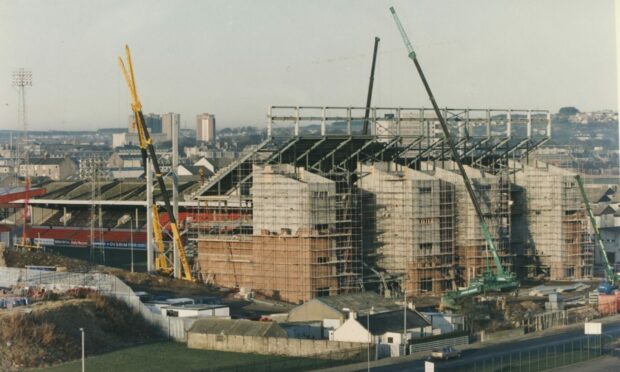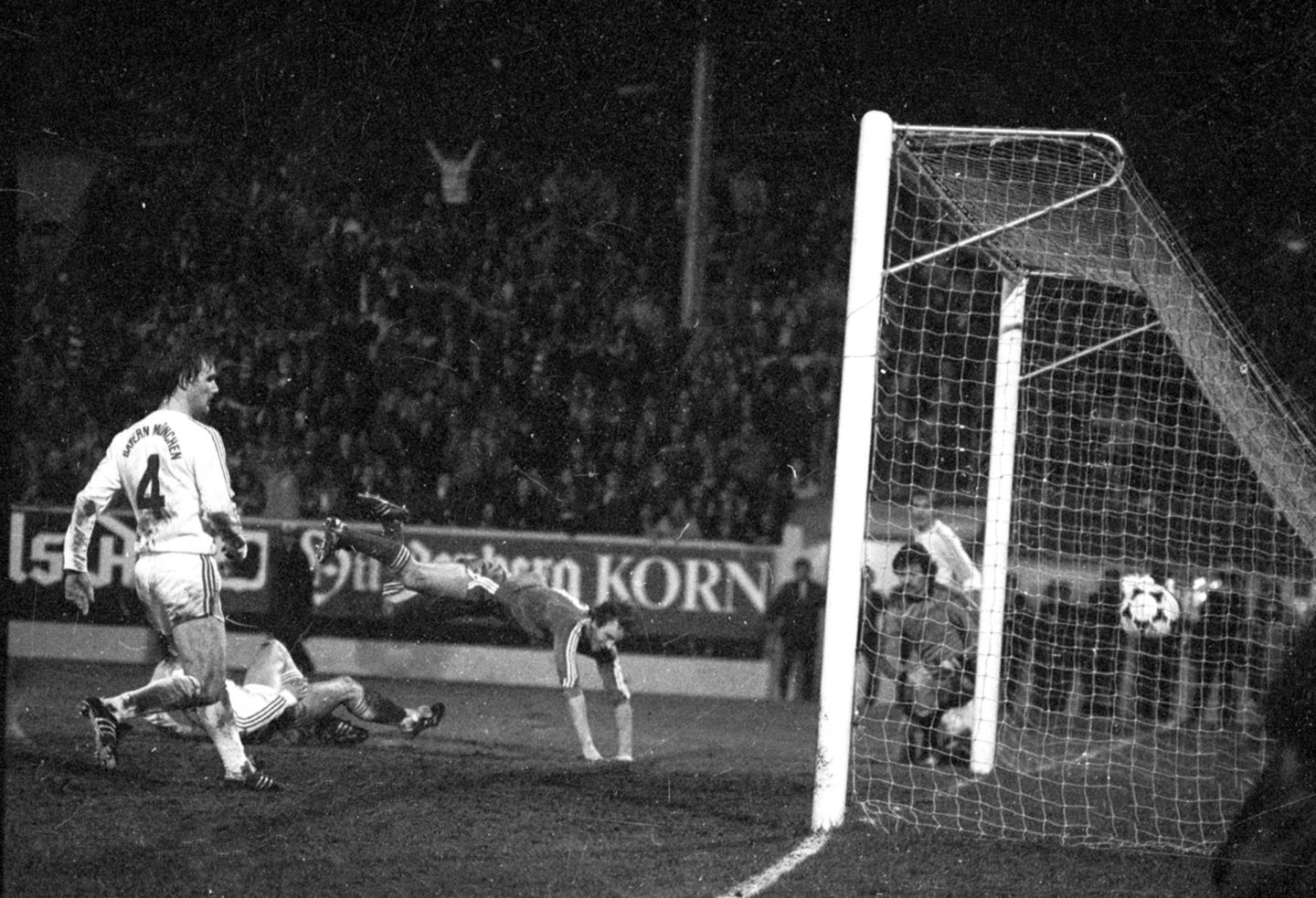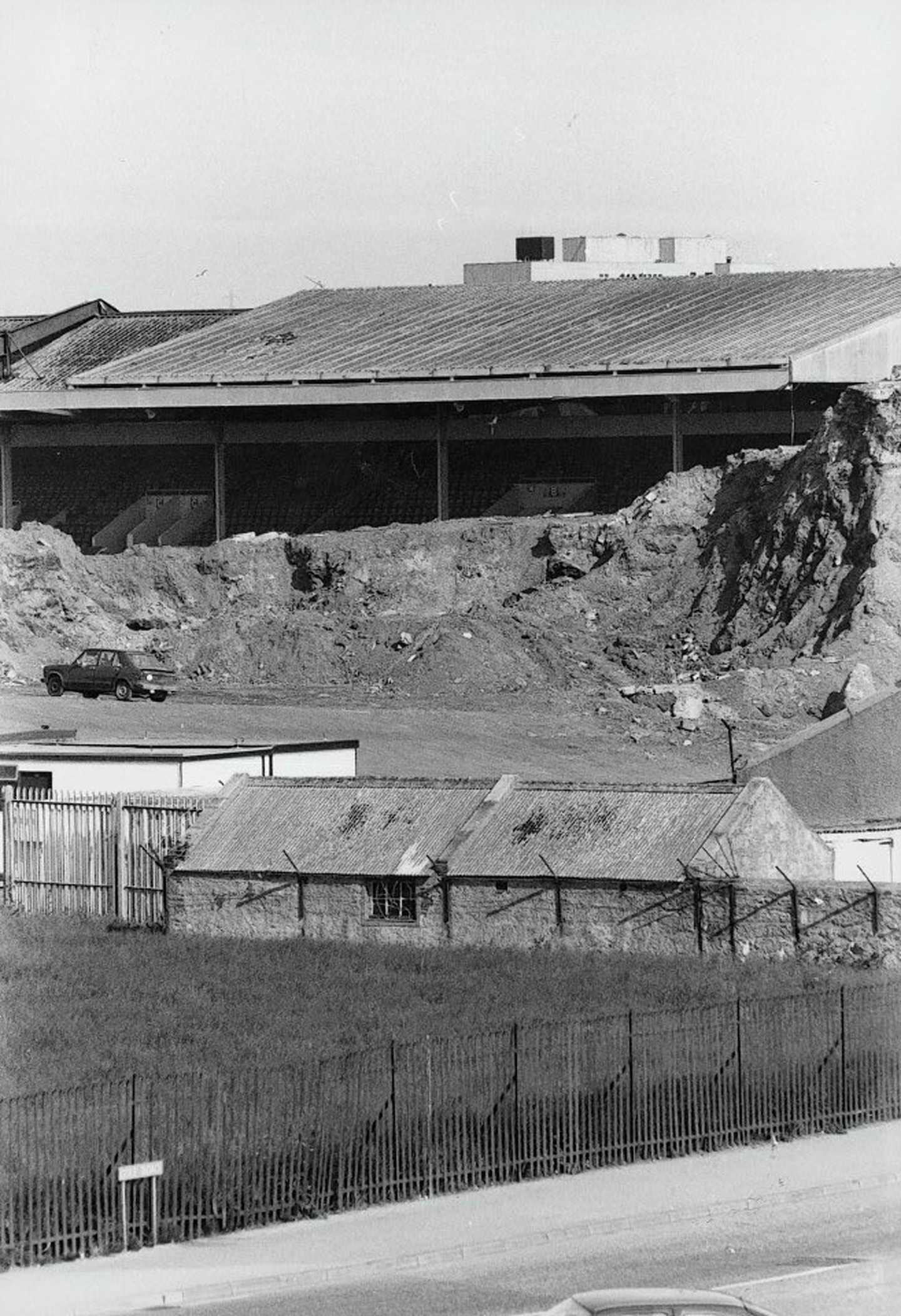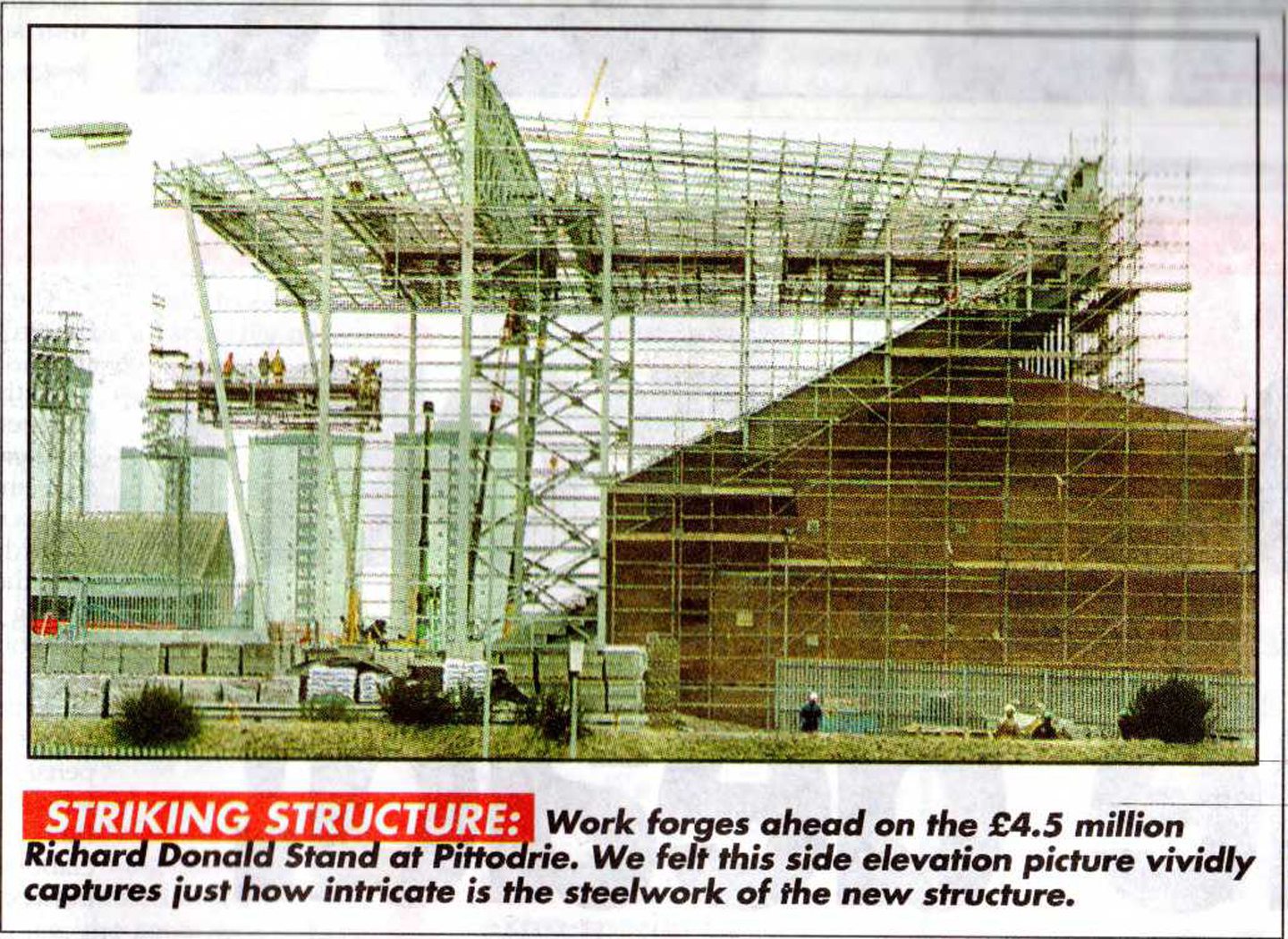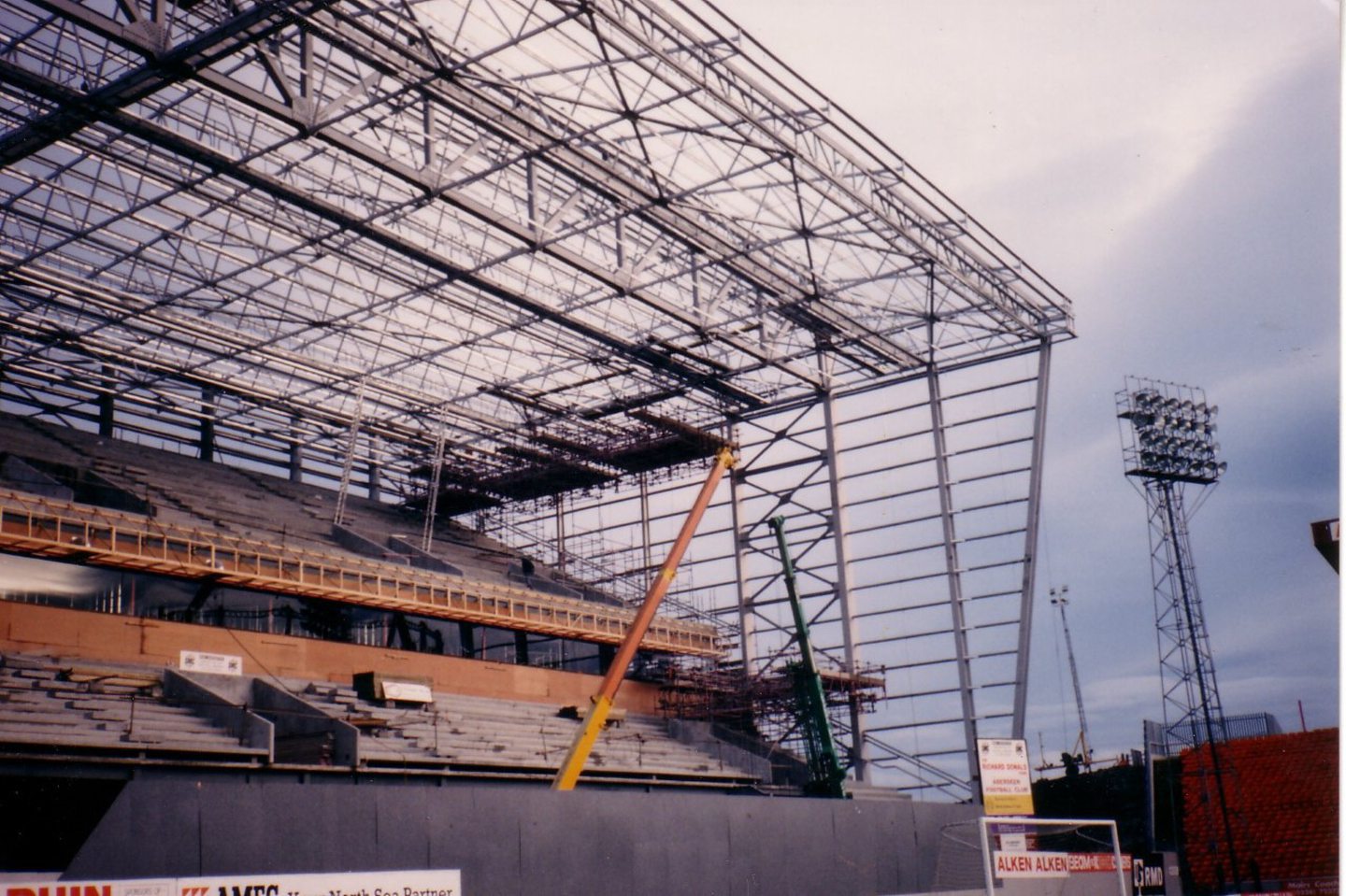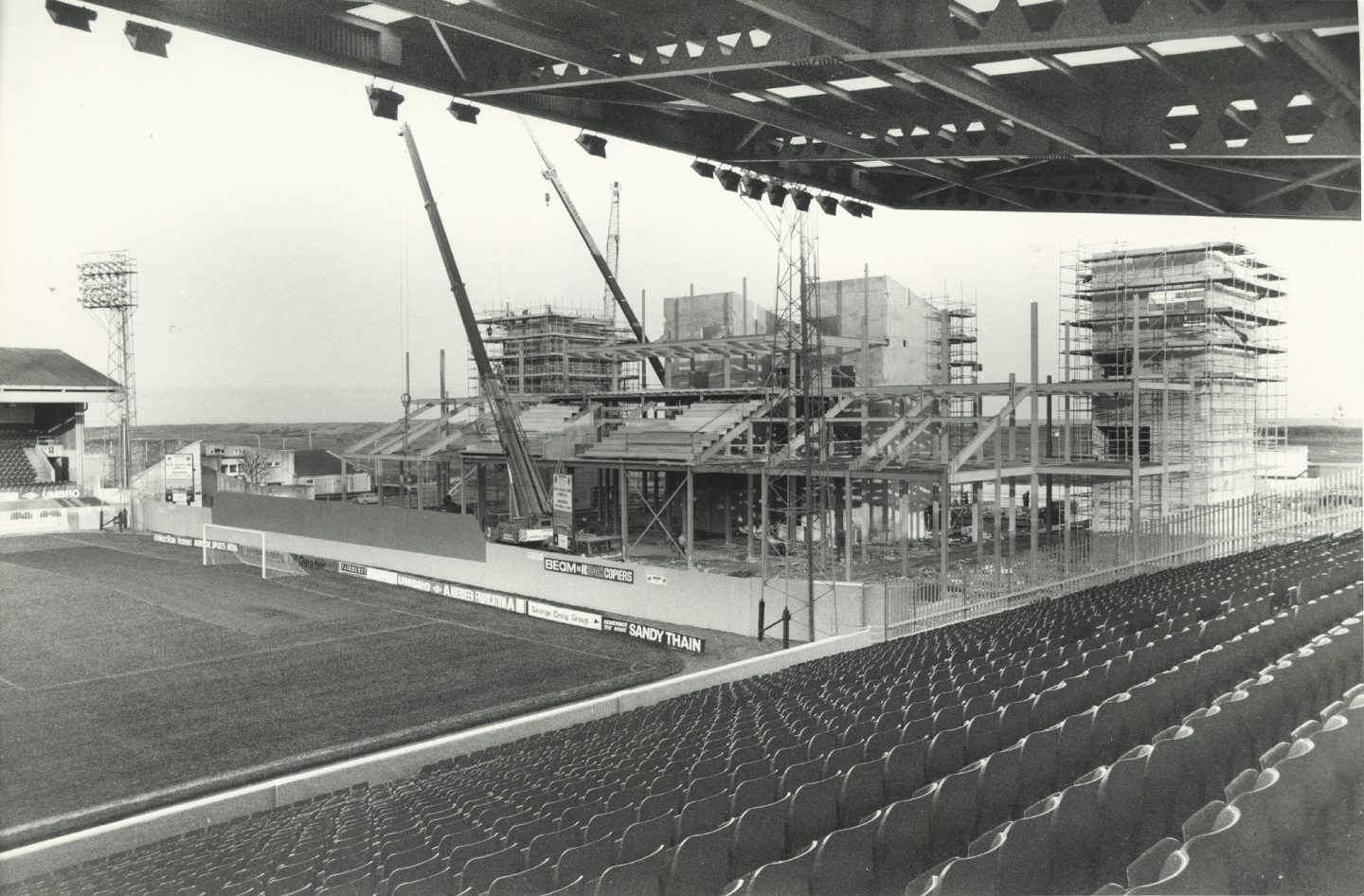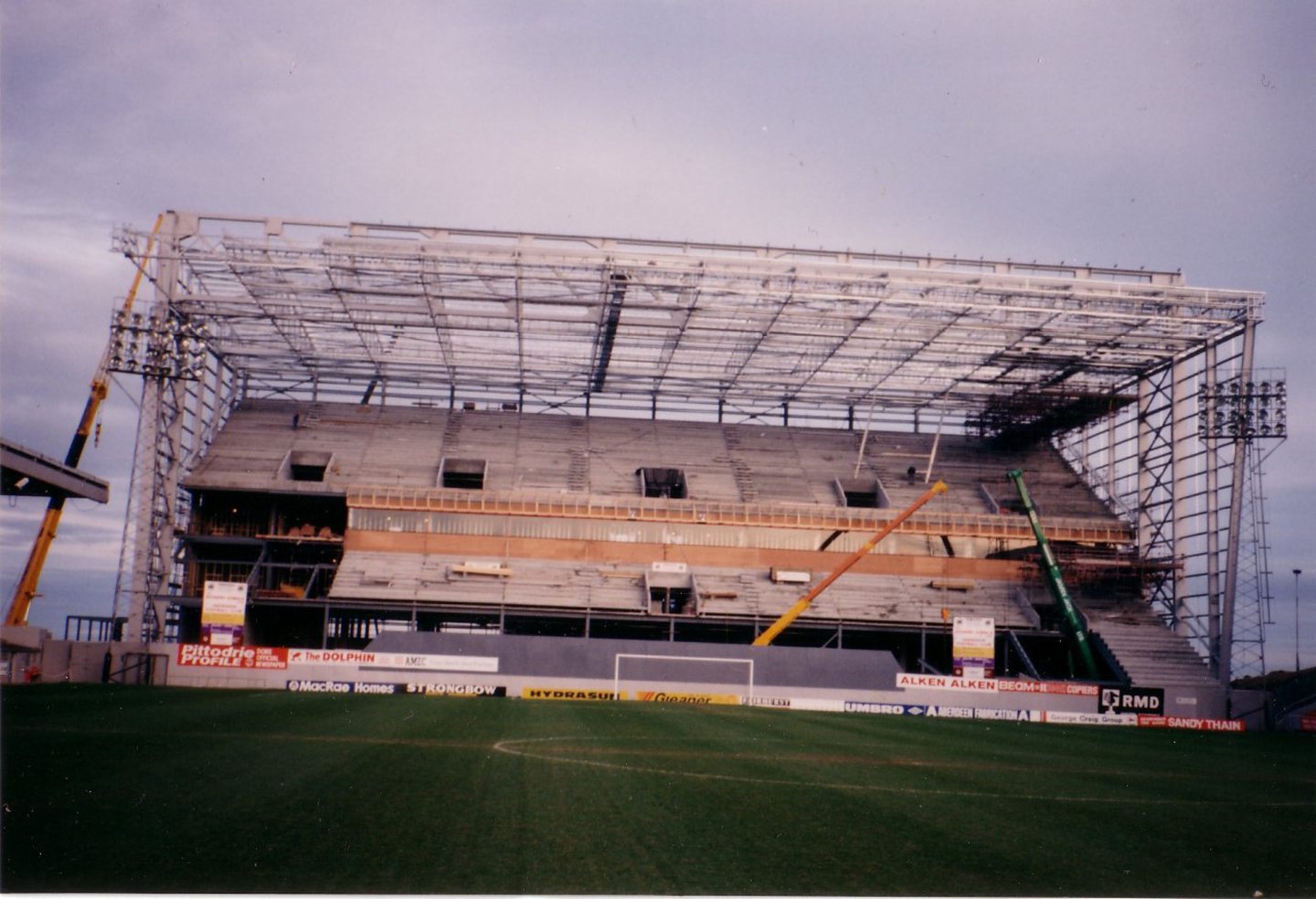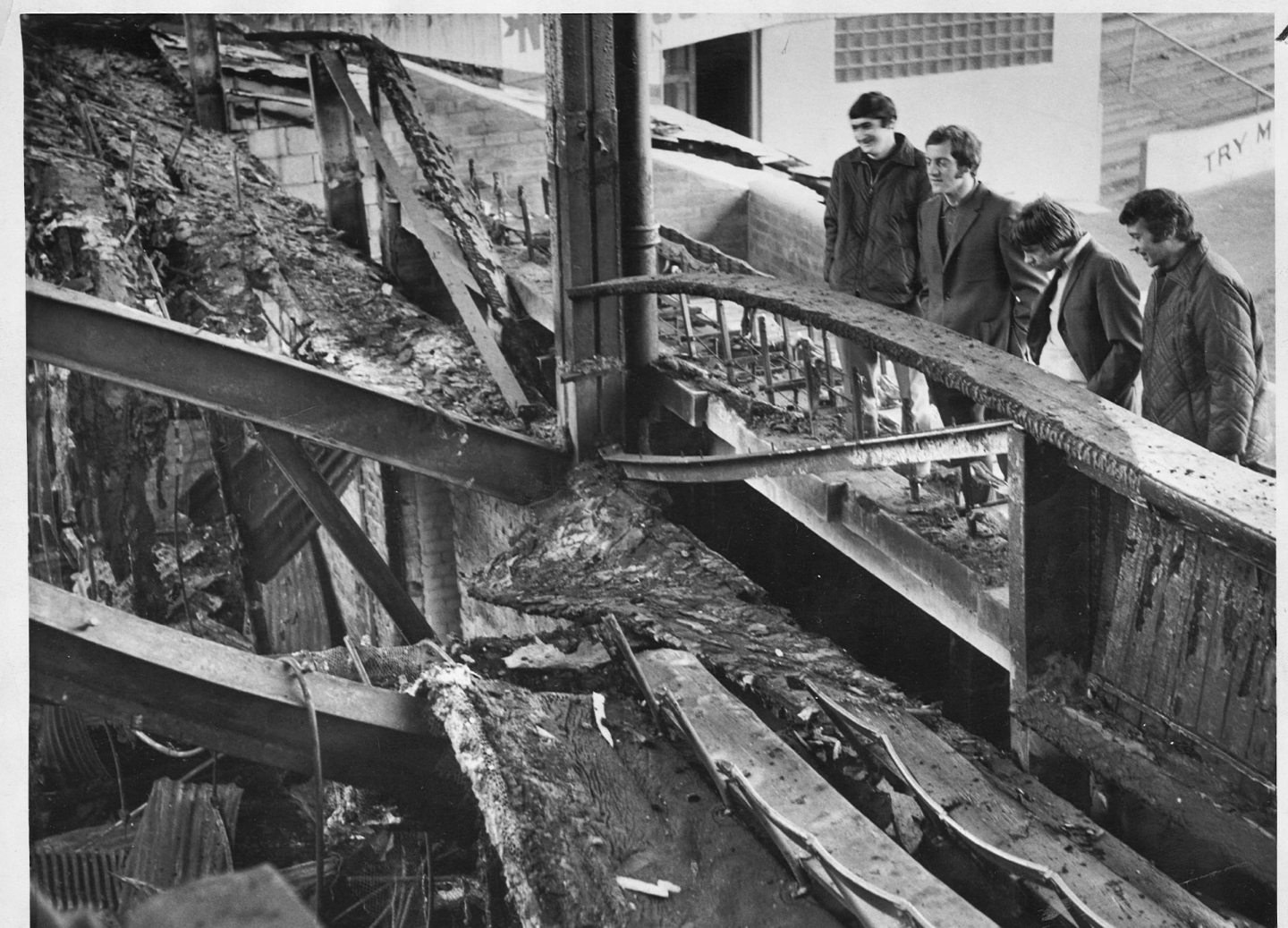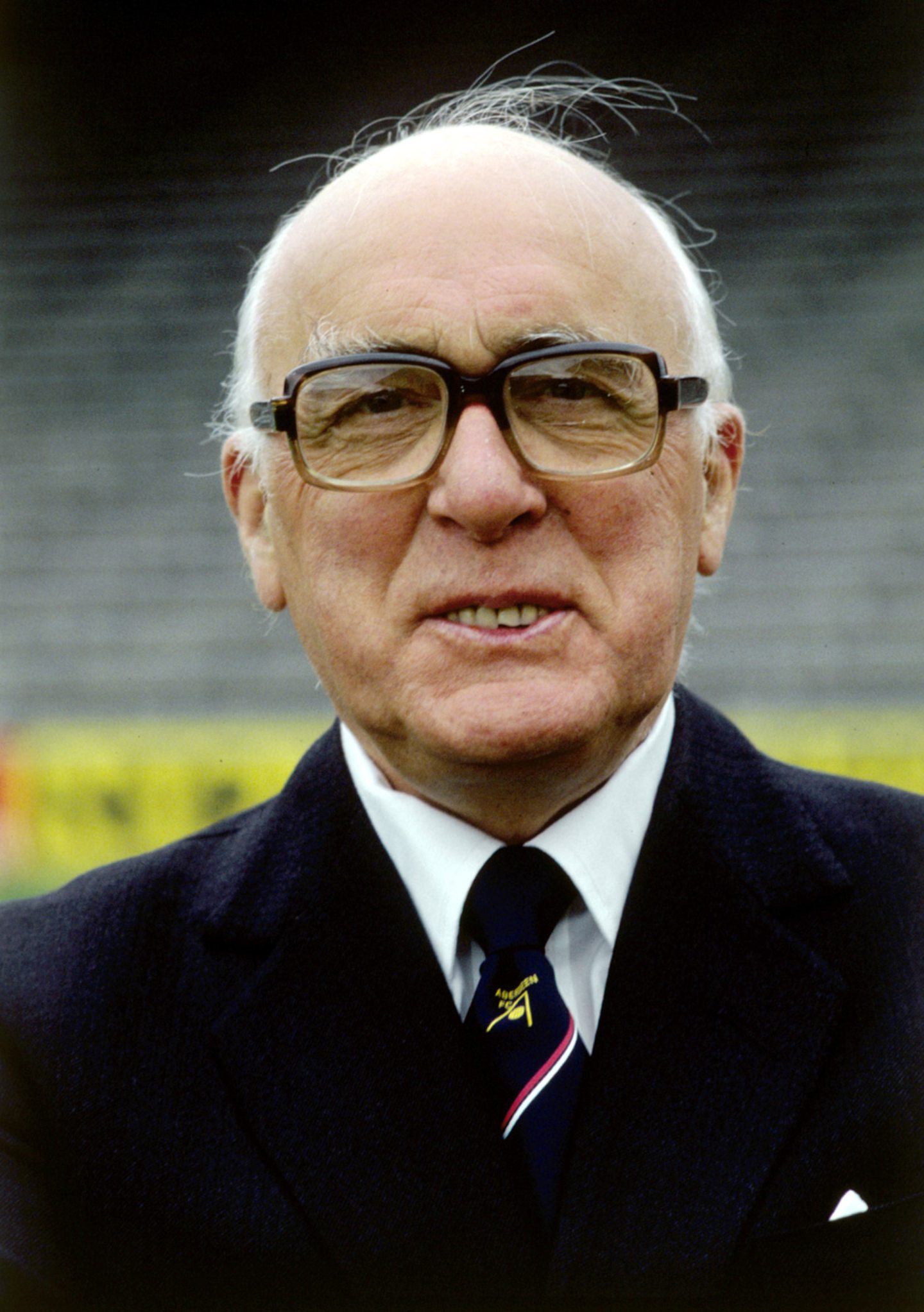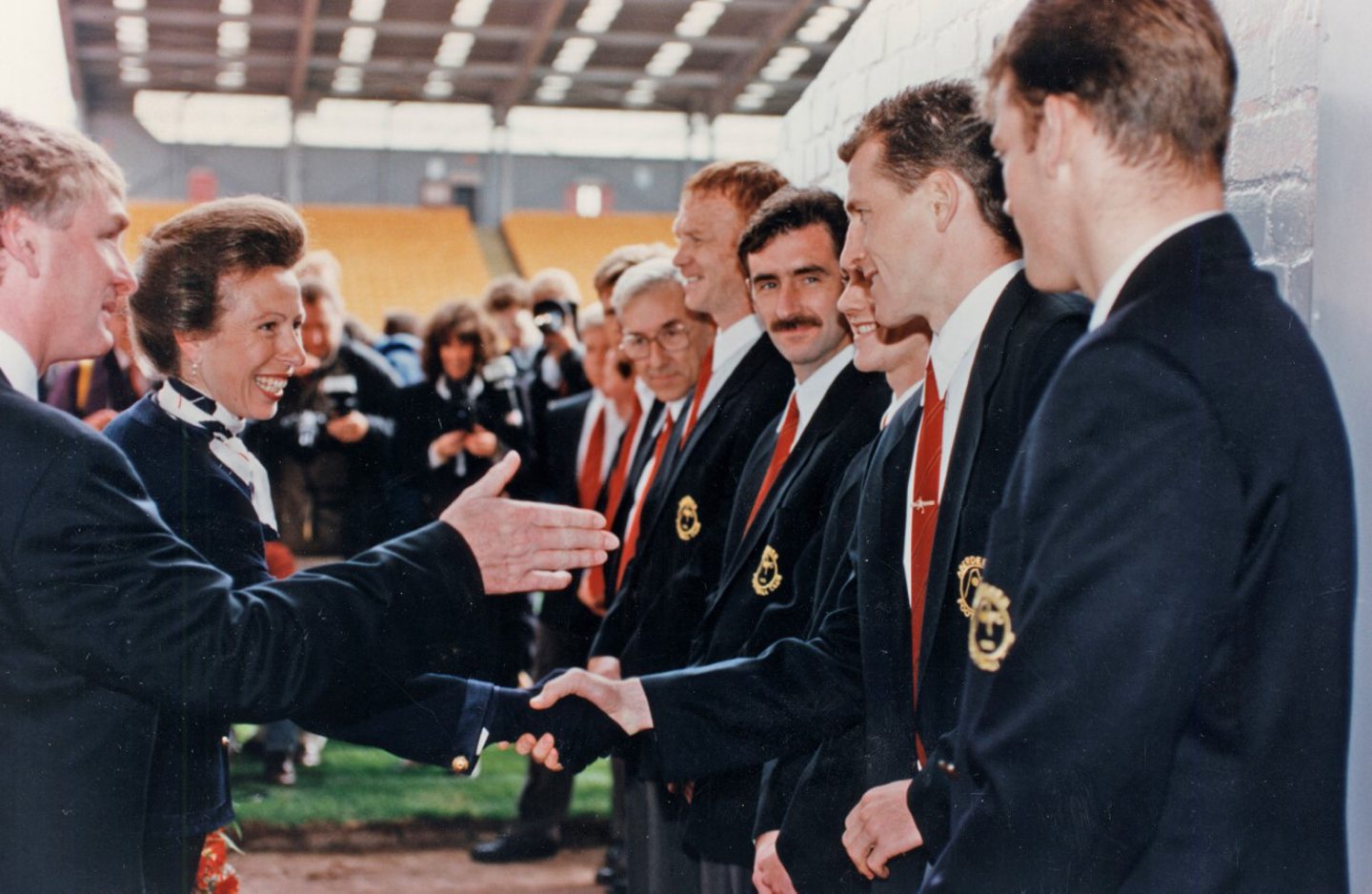There were no shortage of glory nights for the patrons of the Beach End at Pittodrie during the 1970s and 1980s.
Week after week, oblivious to the often frozen weather, the fans would flock to this part of the stadium to cheer on Aberdeen players who boldly went where none of their predecessors had gone before, at home and in Europe.
Ipswich, the reigning UEFA Cup holders, were dismantled and left feeling discombobulated when they were eliminated by the Dons in 1981, even as a raucous din reverberated around the arena – and, of course, there was a night like no other when Bayern Munich were beaten by Alex Ferguson’s side during their surge towards European glory in Gothenburg in 1983.
Yet, less than a decade later, the Beach End was becoming increasingly dilapidated and the club directors planned a new grandstand which they decided would be named after their inspirational chairman, Dick Donald.
It was a declaration of intent which was praised by many supporters. But the project also served as a reminder that Aberdeen‘s best days were behind them, following the departure of Ferguson and retirement of his all-conquering side.
Nobody could deny that Donald wasn’t worthy of gaining a permanent memorial at Pittodrie. After all, he had laid the foundations for the Granite City organisation’s success in the 1980s and his death in 1993 brought to an end a remarkable 65-year connection with the club he loved.
But even as work proceeded on the new development, there were some who felt the demolition of the Beach End was akin to an act of sacrilege. Wasn’t this the place where the Red Army had cheered on Joey Harper, John Hewitt, Gordon Strachan, Willie Miller and a whole host of other luminaries?
Suddenly, at the start of the 1992-93 campaign, that end of the ground was out of use as the bulldozers and cranes moved in to transform Pittodrie.
One journalist in The Press and Journal described it as “the end of an era which will probably never be repeated in this club’s history”. And several letter writers to the newspaper shared that sense of sadness and wondered whether it was a sensible move by the board.
Ferguson had no doubt about the massive influence which Dick Donald had made on Aberdeen, ever since he signed as a player back in 1928.
The gruff Glaswegian said of the man whom he treated like a father figure: “As a chairman, he was a colossus, and nobody had to tell me that I had little chance of ever working for his like again.”
But it was almost a microcosm of the Dons’ decline in the 1990s that, despite the best efforts of the construction workers, the octogenarian Donald was not in good enough health to attend the opening of the stand which bore his name. And he died just a few months later on the day before Hogmanay.
The news about the stadium redevelopment was conveyed to fans in a breezy programme message at the start of the new league campaign in August 1992.
The piece, headlined “Bye Bye Beach End”, continued: “You cannot have failed to notice the change to Pittodrie this season. The old stand has been demolished and work had started on the new £4.5m stand.
“At present, deep foundations have been set and they are currently being connected together with reinforced concrete to form the base from which the steel frame will rise. The work on the foundations should last for about another month and the steel work will begin after that.”
The mood was upbeat and the club strove to persuade any doubters among the fan base that it was time to plan ahead and revamp the ground.
However, as the venture moved forward, not everybody was convinced.
As Jack Webster wrote in the club’s official centenary history in 2003, this initiative packed an emotional punch, but also came with a large price tag.
He said: “Gradually, the Richard Donald Stand took shape and was built in time for Dick to witness the final result.
“It became a memorial to the club’s greatest-ever chairman, but ironically, for one whose shrewd business sense had kept Aberdeen FC out of debt, the stand bearing Dick’s name put the club into the red for the very first time.
“The cost of £4.5m was partly offset by a grant, but one suspects he would still be turning in his grave if he had seen the way that many Scottish clubs, including Aberdeen, were flirting with debt.”
However, The Press and Journal highlighted the family connections at the club which were helping to renovate Pittodrie in a feature at the end of May 1993.
Sports editor Alastair MacDonald wrote: “Aberdeen FC has long been the envy of other leading clubs for the relative freedom from boardroom strife which it has enjoyed over a lengthy period.
Family ties were a major factor
“A family atmosphere prevails at Pittodrie and has done so for many years. This is exemplified at the highest level in the father-and-son partnership of Dick and Ian Donald in their respective roles as chairman and vice-chairman.
“Above all, Dick Donald represents continuity at Pittodrie; a continuity forged in more than half-a-century’s association with the club, first in two five-year spells as a player, followed by an invitation to join the board in 1947 and then more than two decades at the helm, steering things forward.
“Naming Pittodrie’s magnificent new stand in honour of Mr Donald snr is fitting recognition of his contribution to the Dons’ success over a long period.
“It is also appropriate that his name should be connected with this, the latest and most ambitious of a series of modernisation projects which he himself has spearheaded and helped to bring to fruition.”
There were contrasting views when the Richard Donald Stand was opened in a blaze of pomp and ceremony by the Princess Royal in August 1993.
MacDonald described the development as “marvellous” and praised the precision with which the whole construction programme had been carried out.
He added: “Pittodrie is, once again, leading the way and it is a credit to the club that they have turned this round without inconveniencing supporters who remain the precious lifeblood of the game.
Webster was much less complimentary, even while accepting the new stand was “high and impressive with a spectacular view of the pitch.”
He said: “There is little doubt that this mighty creation, for all its virtues, has unbalanced the equilibrium of Pittodrie.
“The focal point of a football ground is best placed around the halfway line, but now there is a lop-sided effect which came to symbolise some of what was happening at the club (during the troubled 1990s).
“The main noise of the crowd was coming from behind the beach-end goal. But the old grandstand on Pittodrie Street took on a second-rate appearance and the stadium itself began to exude a sense of its own discomfort.”
Nearly 20 years have passed – as indeed, sadly, have both Webster and MacDonald – since they discussed the qualities of the Dons’ hallowed ground.
But there remains uncertainty about the future of Pittodrie and whether the club will eventually move to another site at the beachfront.
Dick Donald was the beating heart of Aberdeen and fully merited a commemoration at the venue where he spent countless hours during his life.
But, for many fans, it was and always will be the Beach End, full stop!
More like this:
